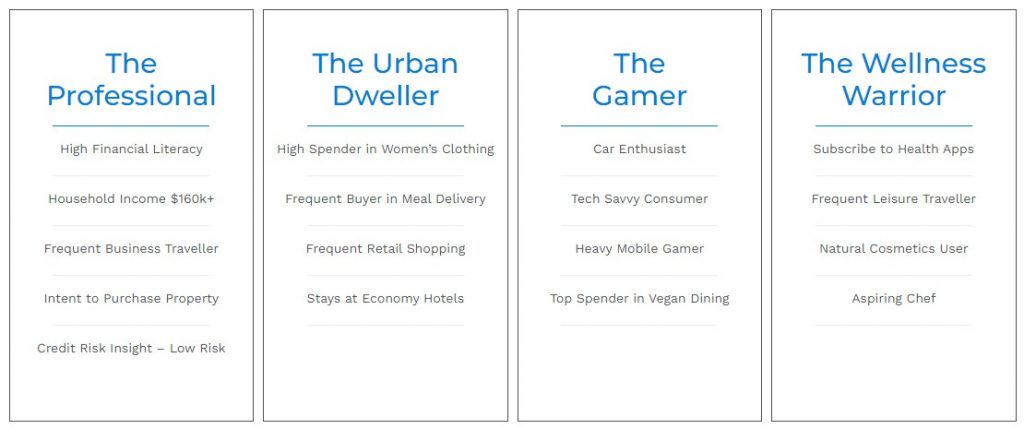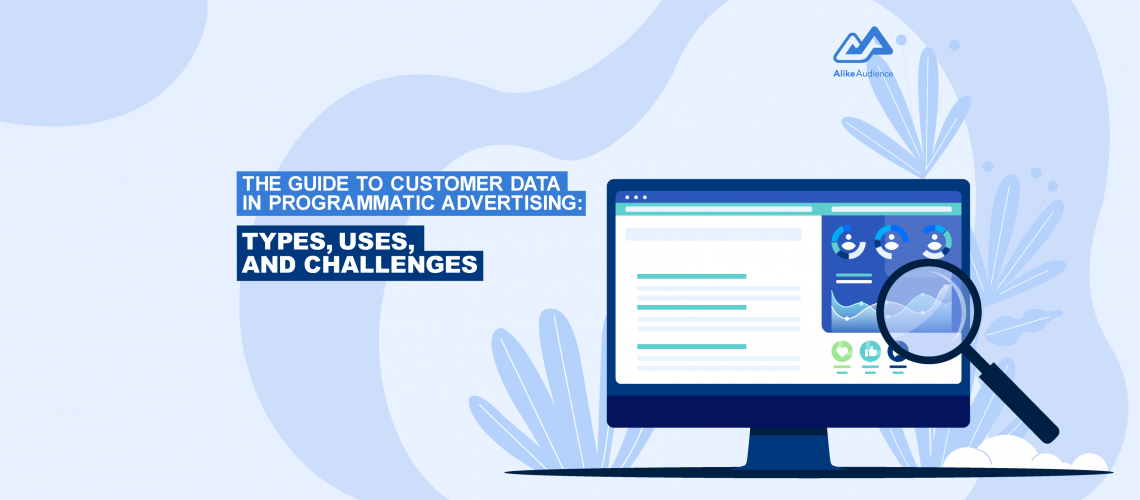Three things make programmatic advertising as effective as marketers love it to be: Deliver relevant ads to the right person (one), at the right time (two), and at the right costs (three).
Among the three, finding the right audience is the biggest challenge for many advertisers. Whether in display ads, video ads, or native and social ads, you need to understand the people you’re trying to reach. This means collecting data on them and segmenting them based on criteria such as interests, behavior, demographics, etc.
In this article, we’ll guide you through customer data in programmatic advertising — how various customer segments inform solid strategic placements and how to overcome the common challenges publishers experience.
What is Customer Data in Programmatic Advertising?
Programmatic advertising is constantly evolving, but the goal stays the same: to provide tailored, personalized ad experiences via an automated process.
People expect it to be this way. Statista revealed 62% of customers prefer personalized experiences. They want the content (and ads) that come into their viewport to match their interests.
How do marketers manage this? They leverage customer data segments to uncover insights into who potential customers are and how they interact with their sales and marketing touchpoints.
Some examples of data segments commonly used to deliver personalized ads in programmatic ad campaigns include:
• Demographic data
• Psychographic data
• Behavioral data
• Interest data
• Purchase intent/in-market data
• Seasonal data
However, customer data is quite tricky to navigate in an increasingly privacy-conscious world. So much so that regulatory agencies make working with and handling customer data a crucial concern for media buyers.
But you cannot have a successful programmatic advertising strategy without it either. A real-world example by The Economist, the digital and print publication, illustrates this.
The Economist leveraged subscriber, cookie, and content data to create audience segments based on interests. This included finance, politics, economics, tech, social justice, etc. Then they built lookalike audiences from these segments.

From this, they created 60 different versions of the ad tailored to these interests. The result? The campaign generated 650,000 new prospects with a 10X ROI and increased awareness for “The Economist” by almost 65%.
With that in mind, let’s explore some types of customer data segments you can use in programmatic ad campaigns.
Related: How Lookalike Modeling Hyper-Targets Audiences at Scale
What are the Types of Customer Data Segments in Programmatic Ad Campaigns?

Customer data segments are a way to categorize customers based on their demographic, psychographic, behavioral, interest, and purchase intent data. Customer data segmentation aims to provide customers with a better experience by tailoring advertisements to their needs.
With programmatic ads, segmenting customer data is essential for personalizing the content delivered to audiences. These targeted marketing campaigns are more effective, significantly reducing the cost investment required to generate substantial conversions.
It even links key results (and other metrics) back to specific segments so you can pull actionable insights to:
• Optimize marketing efforts
• Improve the customer journey, and
• Unravel new eCommerce opportunities
Here are the types of customer data segments used in successful programmatic ad campaigns:
1. Demographic data
Demography refers to attributes that identify a population. These are age, gender, life stages, income, education, race, religion, and ethnicity. So, demographic customer data segmentation focuses on understanding and grouping customer profiles by these attributes.
Demographic attributes tend not to fluctuate too heavily. This is why, at AlikeAudience, our demographic audience segments have a lookback window of 365 days. But we refresh and grow our segments, meaning we add new IDs that tell us more about demographic attributes, every 30 days.
Our demographic data products are highly popular among programmatic advertisers. Book a data strategy session with us to start implementing them on your campaigns.
This gets better, especially when you unify it with data segments that add another dimension to understanding the target market.
2. Psychographic data
Also known as attitudinal segmentation, this type of customer data identifies people by their values, interests, attitudes, and personality traits. Unlike behavioral data (discussed below), psychographic data matures over time and changes at a slower pace. Marketers rely heavily on this type of data to build high-level customer profiles.
People expect brands to have a basic level of familiarity with their interests (especially when they freely provide this data) and tailor content to them. Building a psychographic profile of them will ensure that, besides relying on demographics, you’re tailoring relevant ads to the right person.
3. Behavioral data
Behavioral data, unlike the two above, focus on actions rather than identities. By recording the actions users perform when they interact with your brand’s sales and marketing assets—such as websites and mobile apps—you can divide customers into groups similar in behavioral patterns.
When advertisers analyze past and current customer behavior, they can predict their future actions to a reasonable level of accuracy. Behavioral data can be very helpful in boosting the ROAS of your programmatic advertising campaigns.
The four most popular behavioral segments from AlikeAudience include:
• Stay-at/work-from-home
• Health and fitness at home
• Online casino gambling, and
• Food delivery
4. Interest data
Interest data segments divide the target markets into the topic they’re interested in based on specific signals. An example of a signal is an online user consuming relevant content on a topic of interest.
But at AlikeAudience, we build our interest data segments from mobile attributes, such as app downloads, installs, and usage frequency, which are stronger data signals than simply capturing whether someone is scrolling through relevant content.
Our interest data refreshes every 30 days and has a lookback window of 90 days. Interest segments are most popular among industries like gaming, F&B, and electronics and entertainment.
5. Purchase intent "in-market" data
Purchase intent is the willingness to buy, or in other words, how likely a lead is to convert into a customer. This data is actually a subset of behavioral data but it focuses more on the action the individual is taking that indicates how likely they are to make a purchase.
This is most common in B2B marketing strategy where sales and marketing teams work together to score leads according to the strength of their intent to buy. This way they can prioritize the lead or organization to focus their efforts.
In programmatic advertising, targeting a segment that’s more likely to buy promises higher ROAS. AlikeAudience’s purchase intent segment has a lookback window of 30 days as purchase cycles differ. Some popular examples of in-market segments we offer are home furnishings and appliances and car makes.
6. Seasonal data
Think of Christmas, Black Friday, Cyber Monday, and Halloween shopping. These are specific purchasing behavior changes among target markets that only happen once a year. Marketers who use programmatic ads have to account for these spikes and falls in purchasing interest for specific products and services.
AlikeAudience provides verified seasonal data segments, such as NBA Fans, Christmas Holiday Travellers, and Back to School Shoppers, courtesy of IAB Tech Lab. These have a lookback window of 90 days and refresh period of 30 days.
Challenges with Customer Data in Programmatic Advertising

These customer data segment types do exist but not all marketers are able to use them. Even right at the beginning of this, which is data collection, marketers come face-to-face with a challenging undertaking: How to collect rich customer data with data privacy restrictions, a cookieless internet becoming more real, and high ATT opt-in rates.
And when that data is collected, there’s the challenge of accuracy and data quality. Because inaccurate or poor quality customer data is the hole programmatic advertising dreams go to die — causing waste of ad spend and a poor customer experience that could learn to churn.
As if that isn’t enough, analyzing this data, especially qualitative data, is another challenge to surmount. Interpreting this type of data is subject to the observer’s bias, which brings us back to the inaccuracy issue.
However, these aren’t problems when advertisers work with a customer data management provider that offers trusted, accurate customer data segments.
Read more: What is Data Quality and Why Is It Important for Programmatic Advertisers?
How to Acquire Customer Data in a Privacy-Sensitive World
There are various data sources for collecting customer data:
• Website analytics
• Tracking data
• Transactional data (like pricing and purchase history)
• Customer feedback and surveys
• Contact information
• Social media
• Customer feedback and surveys
• Customer service software (or a CRM)
• Customer data platform (CDP)
• Data management platform, etc
While there are a ton of tools in the market to help with acquiring these data through these various means, not all will be applicable to all types of business. Plus privacy concerns and regulations won’t allow free rein with customer information.
Unless customers have expressly given their consent and agree they understand how their personal data is used, programmatic advertisers cannot use it. You can’t divide them into the 6 segments above, build lookalike audiences, or do retargeting.
You can also consider partnering with a privacy-compliant data provider like AlikeAudience.
Related: How Lookalike Modeling Hyper-Targets Audiences at Scale
Key Takeaways
Customer data is one of the three legs programmatic advertising stands on. Without accurate, high-quality, and privacy-compliant customer data, there’s no balance.
AlikeAudience provides target audience data segments that are validated with real-time signals from billions of mobile devices and anonymous purchase records. You can use these audience segments to execute audience-targeting campaigns at scale. Through our extensive audience segment data and analysis, we can help you deliver high-ROI programmatic ad campaigns.
Ready to tap into high-quality customer data segments? Book a data strategy session with us now.


